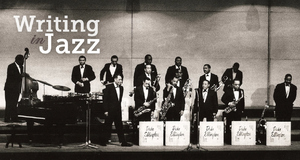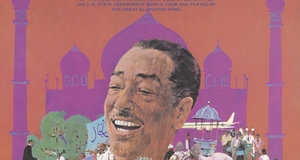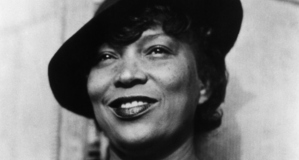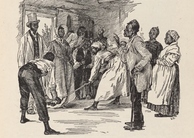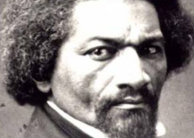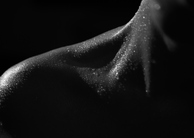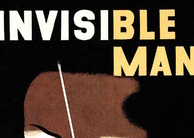Featured Article:Duke Ellington's Jazz Narrative of the African-American: Black, Brown, and Beige
By
2011, Vol. 3 No. 06 | pg. 1/1
KEYWORDS:
To assume the task of narrating the history of an overtly oppressed race is a daunting responsibility. Nonetheless, Edward Kennedy Ellington undertook this task in composing the multi-movement jazz suite Black, Brown, and Beige. Originally debuted at Carnegie Hall on January 23rd, 1943, the composition received mixed, if not critical feedback. Much of that criticism weighed on the "pretentiousness" such a narrative composition implies. As Robert Crowley says, however, it would be shameful to dismiss the whole thing as pretentious: "Anything audacious and ambitious has a tincture of pretentiousness in it. Any less than arrogant composer must sometimes feel, ‘Who the hell am I to set forth this mess of little-learning, guess-work and hope, and expect hundreds of people to listen to it?’" (Crowley, 183). Indeed, hundreds of people did listen to it that debut night in Carnegie Hall. After a tepid reaction to the work, Ellington revised much of the suite and recorded a shortened version, breaking it into a "series of excerpts of less than half the length of the original…" (Priestley and Cohen, 186). Despite these considerable amendments to the work, it remains a pivotal creation in the culture and history of African-American music.Within this suite components of the early Negro resound, from slavery to swing. In Black, Brown, and Beige, Duke Ellington musically narrates the struggles, triumphs, and emergence of individual identity in early African-American culture. Specifically, "Work Song," "Light," and "Come Sunday" exemplify Ellington’s compositional narration of the American Negro’s history. In "Part I," or "Work Song" of Ellington’s Black, Brown, and Beige, the composer musically illustrates the struggles of the early existence of the Negro in America. By beginning the song with a low, repetitious bass line, Ellington prepares the listener for his narrative by offering a sound that insinuates the struggles of the slaves’ physical labor. For example, the droning bass line imitates the monotonous and cruel labor of a slave. The bass’ coarse tone in the lower register presents dissonance in the opening seconds of the track, suggestive of an unrelieved tension. This tension in sound and rhythm then produces the aural image of struggle. The reason this rhythm provokes the specific aural image of struggle is due to the manifestly tensional nature of slavery. Additionally, the process of encoding – the mental disposition of providing structure for any incoming stream of sensations – allows the listener to associate this tensional sound with struggle, and furthermore with slavery (Hogan 11). After just five seconds and less than one measure of this bass line standing alone, the percussion enters the song. The tom-tom engages in a syncopated beat with the bass, and further implies the sounds of physical labor that "Work Song" establishes. The tom-tom comes into the song quietly, but builds in intensity and volume quickly, creating an atmosphere of impending doom. Doom, attributed to the tom-tom’s beat, becomes part of Ellington’s compositional grammar – "the set of rules that the composer follows consciously or unconsciously in producing the piece," – in "Work Song," due to the fact that whenever this initial beat returns, so does the atmosphere of struggle (Hogan, 11). Furthermore, the "one, two" percussive beat of the tom-tom gives the "illusion of a self-perpetuating form like that of a genuine work-song," (189, Priestley and Cohen). By providing this development and opening movement, Ellington sets the tone for the rest of his narrative throughout this track. Also in this first track are Duke’s jazz interpretations of triumph associated with the development of the African-American slave. After the initial bass-tom-tom intro, the percussion gives way to a high-hat, the tempo picks up, and the brass section begins its swing. The high-hat alters the percussive beat from a monotonous drone to a light dance beat, signifying the change from labor to relaxation, or struggle to triumph. As the trumpets provide a background phrase, the saxophones are heard in the forefront playing an ascending repeated theme that ends on a "high note," both literally and figuratively. Moreover, this higher register juxtaposes the low register introduced by the bass in the beginning, while also juxtaposing the doom that low bass line carried. By switching registers in this way, Ellington signifies the switch from struggle to triumph. Triumph can also be heard in the excitement and energy produced by the trumpets beginning at forty-three seconds, in a phrase that soon resolves in an antiphonal conversation with the saxophones. This up-tempo trumpet part, characteristic to Ellington’s dance-oriented tunes, provokes a feeling of freedom of movement, which is particularly accented when set in contrast to the tom-tom’s definitive one-two beat. Just as the trumpets play this up-beat phrase, however, the tom-toms are reintroduced, emphasizing both the return of struggle and Ellington’s compositional grammar. As that one-two percussive beat is implemented again, the trumpets relent their position as improvisers, and begin playing a repetitive phrase confined to the rhythm of the tom-toms. The trombones operate outside of this phrase, yet they also reintroduce struggle in this section. At one minute and twelve seconds, the trombones begin to play a theme that is reminiscent of the earlier saxophones ascending phrase, which signified triumph. Instead, the trombones play a series of descending notes, this time ending on a low note, contrasting with the triumphant mood established by the earlier saxophones. This back and forth between moods is essential in understanding Ellington’s compositional grammar in "Work Song." By first instituting the theme of struggle, and then contrasting it with triumph, Ellington provides not "specific vignettes" of the slave’s life, but a "generalized history," (Priestley and Cohen, 187). This push-pull motif (both in sound and mood) exemplifies his compositional grammar by detailing the existence of the Negro in pre-abolitionist America. In "Part III" or "Light" of the suite, Ellington continues his jazz narrative by establishing an identity for the Negro through the individualized voice of the soloist. The trumpet is introduced as a soloist beginning at one-minute and five-seconds on the track and its similarity to vocal inflections are immediately apparent. For example, the moaning sound produced by the trumpeter in this solo resonates as an imitation of the human voice. Specifically, the wah-wah sound – an onomatopoeic device that is achieved by "regularly bringing into play and cutting out treble frequencies in the course of a note" – resounds as a moaning voice (Kernfeld, 896). The ululating reverberations of the trumpets wah-wah exemplify the imitation of voice that is characteristic to the jazz idiom. By attributing this track an individualized voice, Ellington begins to reveal an identity within the musical composition. In "Light," this identity initially takes the form of yearning due to the trumpets’ moans. For instance, the way in which the trumpeter bends the notes, operating outside the harmonies of the tracks’ given key, creates dissension among the notes. As a result, dissension causes the inability to "recognize structural organization," which ultimately results in tonal and cognitive displeasure (Hogan, 8). Moreover, the stretched out "wah" sound provokes the aural image of yearning due to the sense of longing that is associated with the emotion. Both yearning and the trumpets’ moans are elongated senses, thus producing similar emotional reactions from the listener. This yearning defines the track’s initial identity because it is set in the foreground, luring the focus of the listener to the soloist instead of the rhythm sections. By the end of the track, however, the identity evolves from one of structureless-yearning to one of definitive happiness. At five-minutes and fifteen-seconds, just one minute before the end of the song, Ellington implements a transition from a slow, subdued mood, to an up-tempo swing beat. Within this up-tempo dance rhythm is the antiphonal soloing of Lawrence Brown’s trombone, the instrument that has taken on the role of voice and identity in this last minute. Contrasting with the vague note-bending of the trumpet solo, the trombone plays a series of decisive notes, suggestive of a more strongly defined identity. The ostinato (repeated) solo-phrase of the trombone, for example, continually rises in pitch (between 5:16 and 5:25), creating a countermelody to the rest of the ensemble (Priestley and Cohen, 194). This antiphonal deviation between the trombone melody and the ensemble places the two sections in aural opposition. That opposition, or defiance, of the trombone’s voice contradicts the subdued voice of the trumpet, and provides an authoritative identity for the soloing instrument. Finally, in Black, Brown and Beige’s fourth movement, "Come Sunday," Mahalia Jackson adopts the role of "voice," by lyrically presenting an identity of the African-American. Invoking the will of God in the lyric "God up above/ Please look down and see my people through," Jackson expresses the role of Christianity in the African-American’s individualization. "The Christianity of the slave," identified the African-American because it "represented a movement away from Africa" (Jones, 39). As the Negro digressed from African traditions and began to embrace American cultural artifacts, such as the Christian religion, an identity composed of Western ideals was constructed. Moreover, the "Christian slave became more of an American slave, or at least a more ‘Westernized’ slave, than the one who tried to keep his older African traditions" (Jones, 38). By adopting a Western practice, the Negro identified with at least one aspect of American culture, thus creating for himself an identity in place of the African identity, which had been forced into total submission. This "Americanized" identity is illustrated in the third verse of "Come Sunday," as Jackson announces, "He'll give peace and comfort/ To every troubled mind/ Come sunday, oh come Sunday/ That's the day". The genre under which Jackson’s lyrics are classified, "Gospel," is a direct result of the African’s espousal of Christianity. Gospel music – "an American religious music associated with Christian evangelism and blending elements of folk music, spirituals, and jazz" – was a culmination of the African-American identifying with the new religion (Kernfeld, 473). By implementing this gospel in "Come Sunday," Ellington illuminates the Negro’s appropriation of an Americanized identity. As Leroi Jones says in his book, Blues People: Negro Music in White America, music is "one of the most apparent legacies of the African past" (Jones, 16). Ellington has not only provided a narrative of the African-American, he has contributed a significant work of art to that legacy. Through the medium of jazz, infused with aspects of the blues, classical and gospel, Ellington has produced perhaps the most appropriate context to present his story. What better way to discuss the history of ones own culture and race than with the very music his people created? Though assuming the task of telling this story has been deemed pretentious, audacious, and overly-ambitious, Ellington nevertheless succeeds. Physical labor, personal triumph, religion, and artistic creation: all are elements expressed within Black, Brown, and Beige; all contribute to Ellington’s presentation of jazz as a narrative; and all are thoroughly discussed in musical composition. The result is a stunning auditory experience depicting the emergence of an individual identity through the struggles and triumph of the American Negro. ReferencesCrowley, Robert D. "Black, Brown, and Beige After 16 Years." Black, Brown, and Beige (1943). Print. Hogan, Patrick C. "The Dustheap of History: Why Cognitive Science Now?" Cognitive Science, Literature, and the Arts: A Guide for Humanists. New York: Routledge, 2003. 1-28. Print. Jones, Leroi. Blues People: Negro Music in White America. New York: Perennial, 2002. Print. Kernfeld, Barry. The New Grove Dictionary of Jazz. New York: Grove, 2002. Print. Priestley, Brian, and Alan Cohen. "Black Brown and Beige (1974-1975)." Black, Brown, and Beige (1943). Print. Suggested Reading from Inquiries Journal
Inquiries Journal provides undergraduate and graduate students around the world a platform for the wide dissemination of academic work over a range of core disciplines. Representing the work of students from hundreds of institutions around the globe, Inquiries Journal's large database of academic articles is completely free. Learn more | Blog | Submit Latest in African-American Studies |








